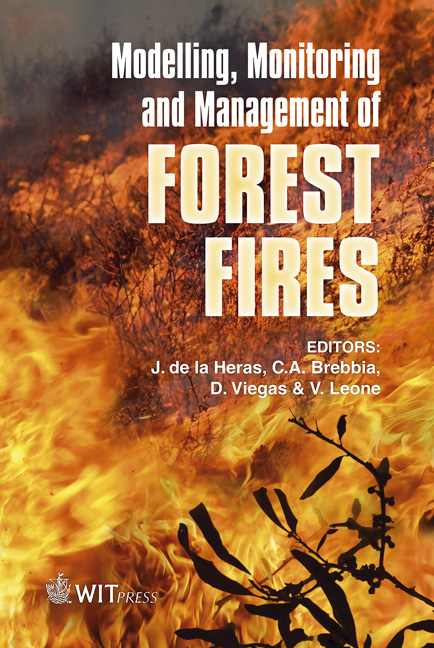Mutual Influence Between Surface Fire Propagation And A Tree Trunk
Price
Free (open access)
Transaction
Volume
119
Pages
11
Page Range
131 - 141
Published
2008
Size
1,862 kb
Paper DOI
10.2495/FIVA080141
Copyright
WIT Press
Author(s)
J. M. C. Mendes-Lopes, J. M. P. Ventura & N. M. G. Santos
Abstract
Computational modelling of fire propagation is becoming one of the main tools for forest fire studies. Complex physical models are coping with increasingly larger scales and meshes that no longer can accommodate trees at individual level. Therefore, it is important to know how fire propagation is influenced by tree trunks under windy conditions in order to include that information in the model and in the cells that contain trees. It is also important to know how the flame affects the trunk, especially in its leeward side where the flame may stay attached. To gather that type of information, a set of experiments was performed in a wind tunnel especially prepared to carry out fire propagation tests in forest fuel beds. A Pinus pinaster trunk was mounted vertically in the centre of the 1.70 m long measuring zone. Temperature time profiles were measured in the windward, lateral, and leeward sides of the trunk, with three thermocouples vertically aligned in each of those three sides. Rate of spread, flame angle, and flame height were obtained from video movies, as well as flame height and residence time of the attached flame in the near-wake of the trunk. Qualitative and quantitative results show that flame propagation is not particularly sensitive to the trunk’s presence, except in the near-wake of the trunk. Under certain circumstances, flames attached to the leeward side of the trunk can be much taller than the flame’s main body and can remain in that zone for longer periods than elsewhere. Keywords: fuel bed, flame propagation, rate of spread, tree trunk, Pinus pinaster.
Keywords
fuel bed, flame propagation, rate of spread, tree trunk, Pinus pinaster.





